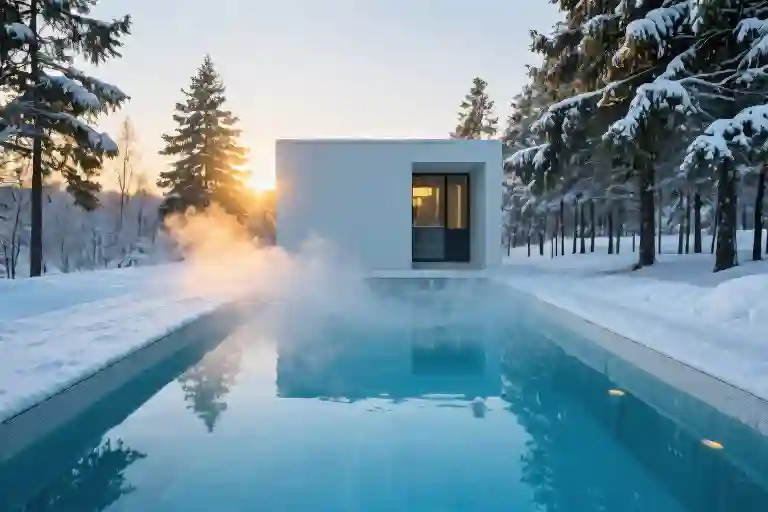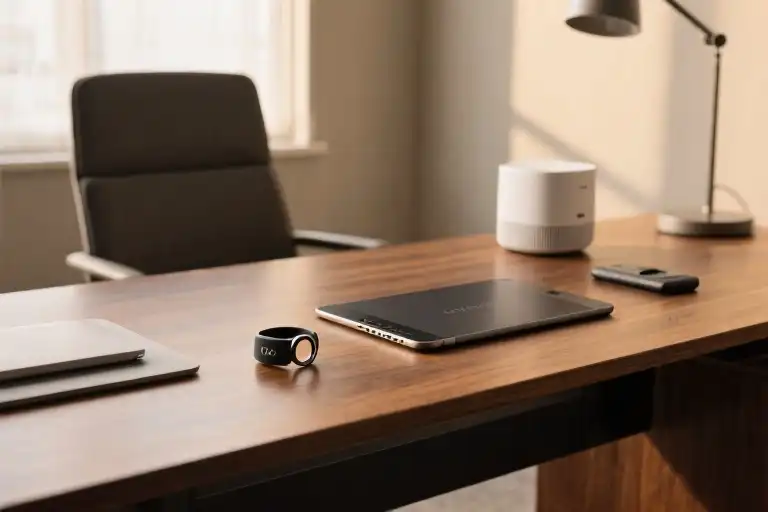The laughter echoed off the tiled walls as another person emerged gasping from the icy water, their initial shrieks dissolving into exhilarated giggles. At that Brooklyn spa last winter, the cold plunge pool became the day’s unlikely social hub—a rotating cast of urbanites confronting their fear response while Instagram-ready Himalayan salt walls glowed nearby. What struck me wasn’t the ritual itself, but how this ancient practice had been repackaged: Japanese-inspired lighting framing a Scandinavian tradition, filtered through American wellness culture. The question lingered like the steam rising from the adjacent Russian banya—are we engaging with cold therapy as ancestral wisdom, or just another algorithmically amplified trend?
Martina H, a self-described ‘Arctic Wanderer’ raised in Swedish Lapland, observes this paradox with quiet amusement. Where Instagram influencers tout #ColdTherapy as revolutionary biohacking, her community simply calls it Tuesday—a belief ‘passed down like a wool sweater’ that exposure to winter waters builds resilience. The Sámi reindeer herders of her childhood could read subzero temperatures like poetry, knowing precisely when the cold healed versus when it killed. That nuanced relationship feels worlds away from today’s cold plunge evangelism, where Wim Hof disciples and fitness influencers alike preach universal benefits with near-religious fervor.
The physiological rewards are real enough—that euphoric rush as noradrenaline and dopamine flood your system explains why people keep returning to the shock of icy water. But scroll through TikTok’s endless cold plunge testimonials and you’ll find claims stretching far beyond the science. Yes, elite athletes may benefit from controlled cold exposure for muscle recovery. For the rest of us? Emerging research suggests plunging post-workout could actually blunt muscle growth by up to 20%, a caveat rarely mentioned between the sunrise selfies and ice bath transformation videos.
Perhaps what’s missing isn’t scientific validation, but context. When cold therapy traditions evolved—from Scandinavian winter swimming to ancient Egyptian cold water immersion—they emerged from specific relationships between people and their environment. The Sámi didn’t plunge for optimized mitochondria; they developed an intimate dialogue with the cold as survival necessity. Modern practitioners might do well to borrow that mindset, approaching the practice as Martina suggests: only when it brings clarity rather than punishment. Because ultimately, no amount of dopamine can replace the wisdom of knowing why—and for whom—the cold still speaks.
The Everyday Cold: When Therapy Was Just Tuesday
The steam rises in thick curls as bodies shuffle between sauna rooms and ice baths at a Brooklyn spa. Laughter echoes off tiled walls as people emerge from the cold plunge, their gasps dissolving into exhilaration. It’s a scene replicated in wellness centers worldwide – but for Martina H, who grew up in Swedish Lapland, this ritual needs no hashtags or hype. “We didn’t discover cold plunges,” she writes. “We inherited them, and we call it Tuesday.”
This casual relationship with cold runs deep through northern cultures. The Sámi reindeer herders, Martina explains, developed an intimate dialogue with freezing temperatures – knowing precisely when the cold could heal and when it might kill. Their survival depended on reading subtle changes in wind patterns and ice formations, skills passed down like family recipes. While modern biohackers obsess over precise water temperatures and timing, these Arctic communities understood cold as one understands hunger or thirst – not as therapy, but as inevitable weather.
Ancient Egyptians took a different approach, using cold exposure in religious ceremonies. Priests would alternate between scorching desert heat and Nile-chilled chambers, believing the temperature extremes purified both body and spirit. Russian banyas incorporated ice plunges as punctuation between steam sessions, creating a rhythm of contraction and expansion said to “wring out” toxins. Each culture developed its own cold wisdom shaped by environment and necessity – the Inuit’s gradual acclimation through layered clothing, the Japanese misogi’s ritualistic waterfall immersions.
What unites these traditions is their integration into daily life rather than performance. There were no before-and-after photos documenting resilience, no leaderboards for longest ice bath. Cold simply was – sometimes brutal, sometimes beneficial, always present. This stands in stark contrast to today’s commodified cold therapy, where the experience often matters less than its Instagram documentation. The original practitioners might find our need for scientific validation curious; they measured success not in dopamine spikes or muscle recovery rates, but in whether one could still feel their fingers at day’s end.
Perhaps the most telling difference lies in initiation. Modern cold plunge enthusiasts often start with intense protocols, while traditional methods favored gradual exposure. Sámi children learned to read winter’s signals before testing their limits, just as Russian banya-goers would first warm thoroughly before brief cold bursts. This patient approach stands forgotten amidst today’s viral challenges and extreme endurance feats. The old ways whisper that cold deserves respect before revelation – a lesson often drowned out by the splash of influencer-led plunges.
The Science Behind Cold Plunges: Pleasure and Trade-offs
The scream always comes first. That sharp, involuntary gasp as your body hits the cold water. Then, within seconds, something remarkable happens – the discomfort melts into exhilaration. Your skin tingles, your mind clears, and an unexpected wave of energy surges through you. This isn’t just psychological; it’s your nervous system responding to the shock with a potent cocktail of neurochemicals.
When we submerge in cold water, our bodies trigger an ancient survival response. The sudden temperature drop sends urgent signals to the brain, which releases a flood of noradrenaline – nature’s alertness booster. Almost simultaneously, dopamine begins coursing through your system, creating that post-plunge euphoria many describe. It’s no wonder cold therapy has become the darling of biohackers and morning routine enthusiasts. The natural high is real, measurable, and for many, addictive.
But beneath this biochemical fireworks display lies a more complicated story. While professional athletes might benefit from cold water immersion after intense training sessions, the science tells a different story for casual exercisers. Studies show that for regular gym-goers, plunging into cold water after resistance training can reduce muscle growth by up to 20%. The very process that makes cold exposure therapeutic – reduced inflammation – also interferes with the muscle repair process essential for growth.
The variables matter more than Instagram influencers might suggest. Water temperature dramatically affects outcomes – what works for Wim Hof devotees (often near freezing) could be counterproductive for someone just seeking post-yoga recovery. Hydration levels alter how our bodies respond to cold stress, and individual tolerance varies wildly. Some practitioners report improved sleep and reduced stress at 15°C (59°F), while others need near-ice temperatures to feel effects.
This isn’t to dismiss cold plunges entirely. The mental resilience built through voluntary exposure to discomfort has value beyond muscle metrics. That clarity Martina describes – the moment when cold stops being punishment and becomes meditation – represents something modern science is just beginning to quantify. Perhaps we’re measuring the wrong outcomes when we focus solely on physical performance markers.
The truth about cold therapy lives in these nuances. It’s not a magic bullet, nor is it mere hype. Like most powerful tools, its value depends on how – and why – we use it. The same physiological responses that can hinder muscle growth might perfectly serve someone managing stress or chronic inflammation. Understanding these mechanisms helps us move beyond blanket recommendations to personalized practice.
Finding Your Cold Plunge Rhythm
The steel tub stares back at you, its surface trembling with crushed ice. You’ve read the articles, watched the influencers, even bought the thermometer. Now comes the real question: how do you actually do this without turning your morning routine into a survival documentary?
Let’s start with the basics. That 38°F (3°C) plunge Wim Hof champions? Probably overkill for your first attempt. Most beginners find their sweet spot between 50-59°F (10-15°C) – cold enough to trigger physiological responses, but not so brutal that you’ll associate your bathroom with trauma. Duration matters more than you’d think; three minutes in 55°F water proves more effective than thirty seconds in freezing temps. Your body needs time to activate cold shock proteins, but push beyond five minutes and the benefits plateau while risks climb.
Certain groups should view that ice bucket with extra caution. If you’ve ever fainted during a blood draw or get winded climbing stairs, consult a doctor before subjecting yourself to vasoconstriction. Those with cardiovascular conditions face particular risk – cold water immersion spikes blood pressure faster than an espresso IV drip. Even perfectly healthy individuals need hydration; dehydration magnifies cold’s stress effects like sunlight through a magnifying glass.
Your goals dictate your approach. Seeking post-workout recovery? Wait at least four hours after lifting – that 20% muscle growth suppression hits hardest when muscles are rebuilding. Chasing mental clarity? Morning plunges on an empty stomach heighten norepinephrine surges. Just remember: consistency trumps intensity. Regular 55°F exposures yield better adaptation than sporadic polar bear challenges.
Three questions to ask before stepping in:
- Am I doing this because I genuinely enjoy it, or because some podcast said I should?
- Does my body feel energized or depleted afterward?
- Could I sustain this practice weekly for years, not just Instagram for weeks?
The answers matter more than any thermometer reading. Because ultimately, cold therapy works best when it stops being therapy and becomes simply… Tuesday.
When Tradition Becomes a Hashtag
The cold plunge trend didn’t emerge from laboratory studies or corporate wellness programs. It arrived in our Instagram feeds carrying the weight of centuries – though you’d hardly know it from the #IceBathChallenge posts showing toned influencers grinning through chattering teeth. There’s something unsettling about watching ancestral survival strategies become content fodder, their cultural roots frozen out of frame.
Martina’s observation about Swedish Lapland cuts through the noise: “We didn’t discover cold plunges and we don’t call it ‘cold therapy.’ We inherited them, and we call it Tuesday.” This generational wisdom, passed down like well-worn wool, contrasts sharply with the breathless novelty of biohacking forums. The Sámi reindeer herders she mentions didn’t track their cortisol levels or post recovery metrics – they learned to read winter’s language, knowing precisely when the cold healed and when it killed. Today’s cold plunge evangelists often lack this fluency, treating temperature extremes as another productivity hack rather than a dialogue with nature.
This cultural flattening isn’t harmless. When traditional practices get repackaged as performance-enhancing tricks, they lose their connective tissue – the community knowledge about proper timing, preparation, and individual limits. The Sámi didn’t plunge alone at sunrise for optimal dopamine hits; their cold exposure was woven into seasonal rhythms and collective survival. Modern practitioners risk missing these nuances, turning complex cultural adaptations into isolated acts of endurance.
Social media accelerates this distortion. Algorithms favor dramatic before-and-after testimonials over gradual, contextualized benefits. Watch any viral cold plunge video and you’ll notice the same narrative beats: exaggerated shivering, forced laughter, claims of transformed energy. Rarely does anyone mention that traditional cold exposure often involved gradual acclimatization, or that some Arctic cultures viewed unprepared immersion as recklessness rather than bravery. The hashtag #ColdTherapy currently tags over 800,000 posts, most framing icy water as a universal cure-all rather than a culturally specific tool with real limitations.
Anthropologists call this phenomenon “cultural strip-mining” – extracting appealing surface elements while discarding the supporting structures that make them sustainable. We’ve seen it before with yoga’s detachment from its philosophical roots, or mindfulness practices divorced from Buddhist ethics. Now cold therapy joins the list, its origins fading like breath on winter air while its market value heats up. Wellness companies sell $15,000 cold plunge tubs with Nordic branding but no connection to actual Nordic traditions beyond the aesthetic.
Perhaps the greatest irony lies in what gets lost in translation. Traditional cold exposure often emphasized moderation and listening to one’s body – principles drowned out by the modern push for extreme durations and temperatures. The very communities who pioneered these practices would likely caution against the no-pain-no-gain mentality dominating today’s trends. Their wisdom suggests an alternative metric: cold should clarify rather than punish, as Martina notes. When your teeth chatter not from exhilaration but genuine distress, that’s not resilience – it’s your body’s way of saying the algorithm got it wrong.
This isn’t to dismiss cold therapy’s value, but to question what happens when we prioritize shareability over sustainability. Next time you see a perfectly framed plunge video, consider what lies outside the frame: the generations who developed these practices not for bragging rights, but simply to live well in challenging environments. Their legacy deserves more than becoming background music for our self-optimization playlists.
The Cold Truth: When Tradition Meets Trend
That moment when your body hits icy water – the gasp, the shock, the sudden clarity – has become something of a cultural ritual. From Brooklyn spas to Instagram feeds, cold plunges have transitioned from Nordic tradition to mainstream wellness obsession. But somewhere between ancestral wisdom and viral hashtags, we’ve lost the thread of what cold exposure truly means.
Martina H, our Arctic guide, frames it perfectly: “We didn’t discover cold plunges and we don’t call it ‘cold therapy.’ We inherited them, and we call it Tuesday.” This simple statement unravels the entire modern cold plunge phenomenon. The Sami reindeer herders understood cold as both healer and threat, reading its nuances like a second language. Their relationship with cold wasn’t optimized or biohacked – it was lived.
Today’s cold plunge culture often misses this complexity. The dopamine rush (very real) gets celebrated while the muscle growth suppression (up to 20% for casual practitioners) gets ignored. Professional athletes benefit from controlled cold exposure, but your average gym-goer might be undermining their gains. This isn’t to say cold plunges lack value – that natural high from noradrenaline release can feel transformative – but rather to question why we’ve turned a natural phenomenon into a performance.
Perhaps the most telling detail lies in the language shift. What was once simply “winter” or “Tuesday” now gets branded as #ColdTherapy and #Biohacking. The commodification of cold reflects our modern tendency to extract and optimize rather than coexist. Social media reduces centuries of Arctic wisdom to before-and-after photos and 30-second testimonials.
So where does this leave us? Not abandoning cold plunges, but approaching them differently. Martina’s advice rings true: do it if it brings clarity rather than punishment. The Sami knew when cold healed and when it harmed – we’d do well to recover that discernment. After all, real wellness isn’t about enduring extremes for Instagram, but listening closely enough to know what your body actually needs.
Cold isn’t a trend to consume or a challenge to conquer. As the Arctic winds whisper and the last shivers fade: true cold therapy belongs to those who understand its language, not those who simply post about it.




